How the cult of mermaids "ningyo" appeared in Japan and why their mummies are so valued
By Pictolic https://pictolic.com/article/how-the-cult-of-mermaids-ningyo-appeared-in-japan-and-why-their-mummies-are-so-valued.htmlMermaids are an integral part of European folklore, inherited from pre-Christian times. But it turns out that stories about mermaids are popular on the other side of the world, in Japan. However, the fabulous creatures living in the water in this country are not like ours, and the attitude towards them is completely different.

Stories about encounters with mermaids in the Land of the Rising Sun have been recorded since ancient times. The first mention of ningyo — a mermaid, dates back to the 8th century. The Annals of Nippon chronicle mentions a meeting in 619 with a humanoid creature living in the Omi River, in present-day Shiga Prefecture. Then the mermaid could be seen from afar.
Later in the same source there is a story about the capture of Ning. The mermaid was caught in the nets of a fisherman in the province of Setsu. According to the author, it was a creature that looked like a man and a fish at the same time. In the 19th century, historian Minakata Kumagusu demolished these stories, assuring everyone that illiterate peasants and fishermen mistook giant salamanders for mermaids.
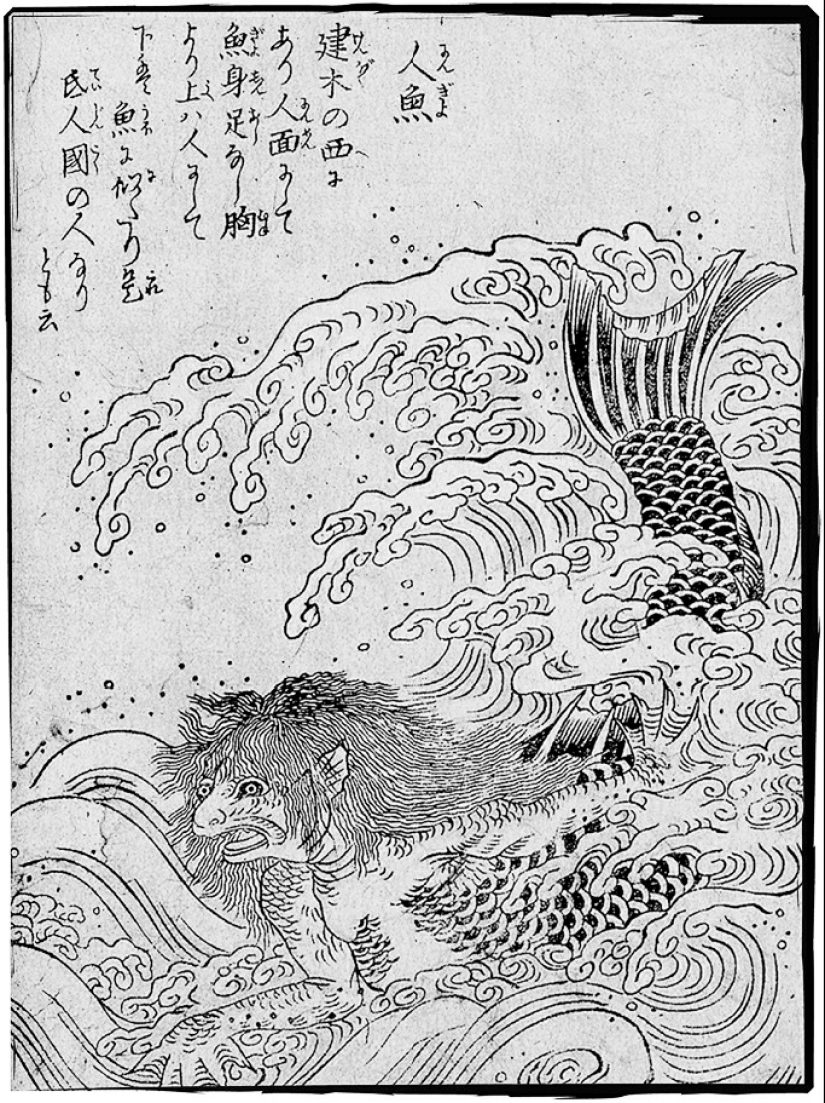
For the first time, the term "ningyo" was used to refer to humanoid creatures living in water in the 10th century. The word appeared in a Japanese-Chinese dictionary published in 937. Mermaids are described as creatures comparable to humans in size, with the body of a fish, a human head and a sonorous child's voice.
A detailed description of mermaids first appeared in 1254 in the collection of short stories "Collection of famous stories, old and new". It says that in the province of Ise, fishermen caught three large and very strange fish in their nets. They had human heads with monkey mouths full of small and needle-sharp teeth.
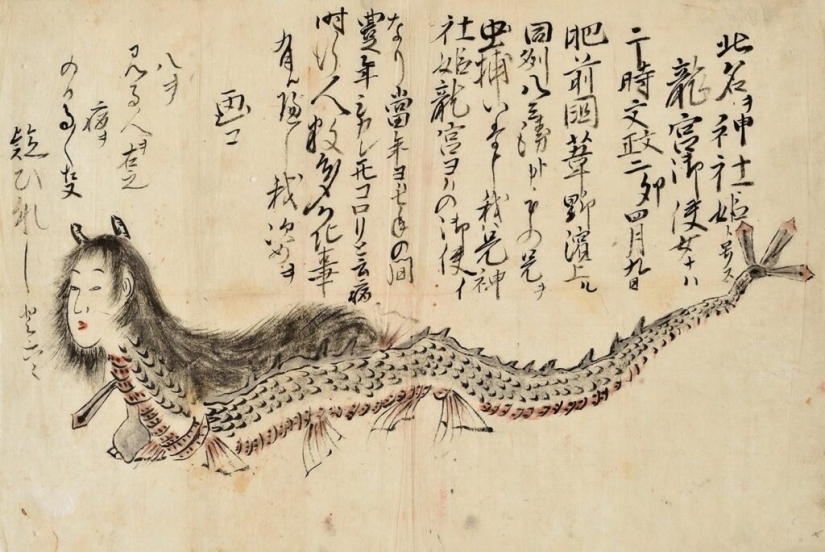
When the catch was brought to the village and its inhabitants surrounded the prey, the creatures began to scream in thin voices and cry. Fishermen killed all three mermaids, and even ate one. The meat, by the way, turned out to be unusual and very tasty. Other written sources of the 13th-15th centuries describe more than 10 cases of people meeting with ningyo, usually in the open sea or on the coast. Almost all authors claim that mermaids appeared mainly in turbulent times for the country. These were periods of wars, epidemics and civil strife.
In 1999, during excavations in Akita province, archaeologists found a wooden board with images. On an artifact dated to the 13th century, an unknown artist painted a priest and a creature similar to ningyo. There was also an inscription that read: "Pity her, but you have to kill her." Scientists have suggested that the priest sacrifices the mermaid to prevent the misfortunes that caused her appearance.
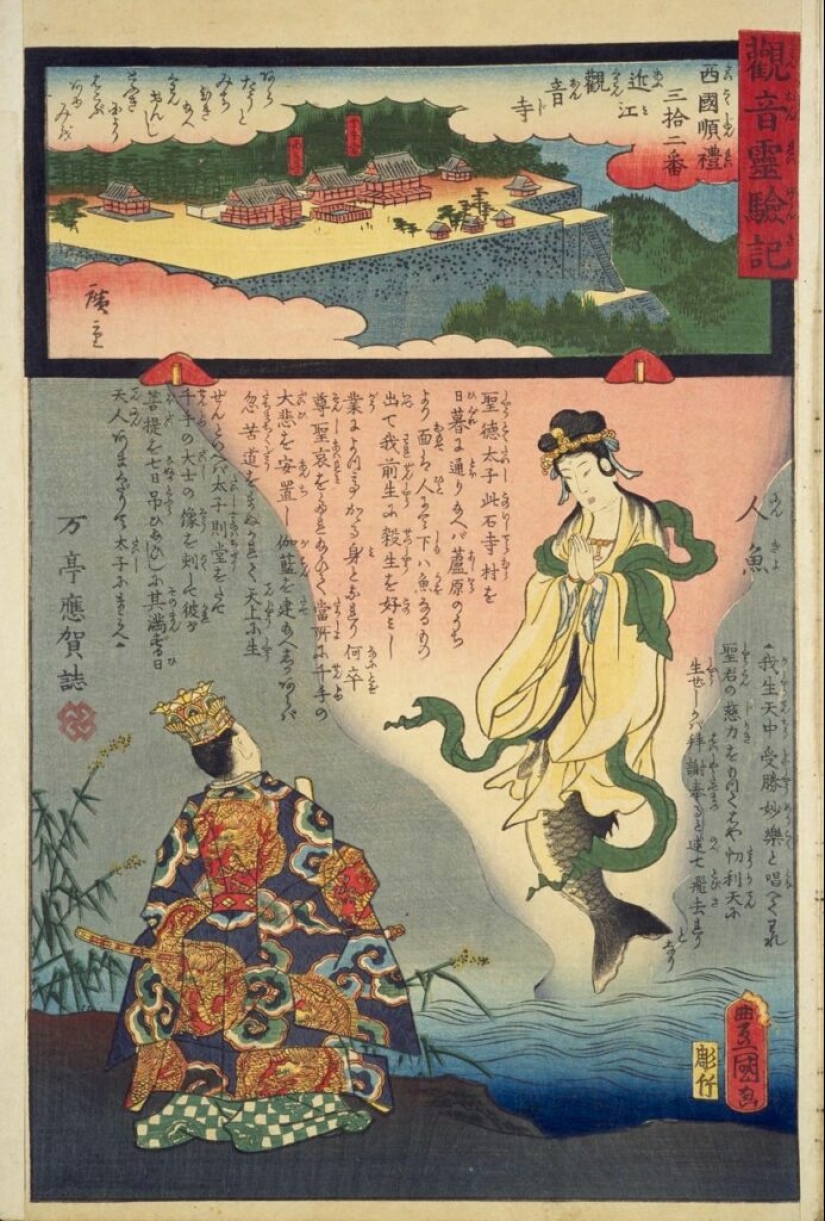
With the onset of the Edo period, in the 17th and 19th centuries, mermaids were tried to be studied. In the treatise "Japanese medicinal herbs" of 1709, the author refers to Chinese manuscripts telling about mermaids. In the Middle Kingdom, they also met these sea inhabitants, but they treated them somewhat differently. For the Chinese, the meeting with the mermaid was not a bad omen, but on the contrary. The fact is that in this country it was believed that mermaid bones have strong healing properties and sold them for a lot of money.
In particular, the treatise "Japanese medicinal herbs" tells about the experience of treating bloody diarrhea by Chinese doctors. To heal the patient, the bones of the mermaid were crushed and diluted in water or an infusion of medicinal herbs. Allegedly, one reception was enough for the patient to recover. It is difficult to say exactly which remains were passed off as the bones of fabulous creatures, but this business was very developed.

But not all authors believed in supernatural beings. Even then there were skeptics who explained the existence of ningyo from the point of view of common sense. In 1713, the book "Japanese-Chinese Illustrated Collection of Three Worlds" was published. There was an article about mermaids in this encyclopedia, but they were served in it as a kind of fish. In the same place, the compilers referred to the experience of the Dutch, with whom Japan was then actively trading. Supposedly in the Netherlands they also catch mermaids and use parts of their bodies as an antidote.
This encyclopedia of the 18th century is also interesting because for the first time the classic image of a mermaid, familiar to us, appeared in it. Obviously influenced by Europeans, the artist painted ningyo as a woman with a fish tail instead of legs. In the "New Treatise on Six Things" of 1786, you can again see the humanoid mermaid. There the author also interweaves the French surgeon Ambroise Pare and the Polish zoologist Jan Jonston. These respected people in Europe recommended killing mermaids and using them in medicine.
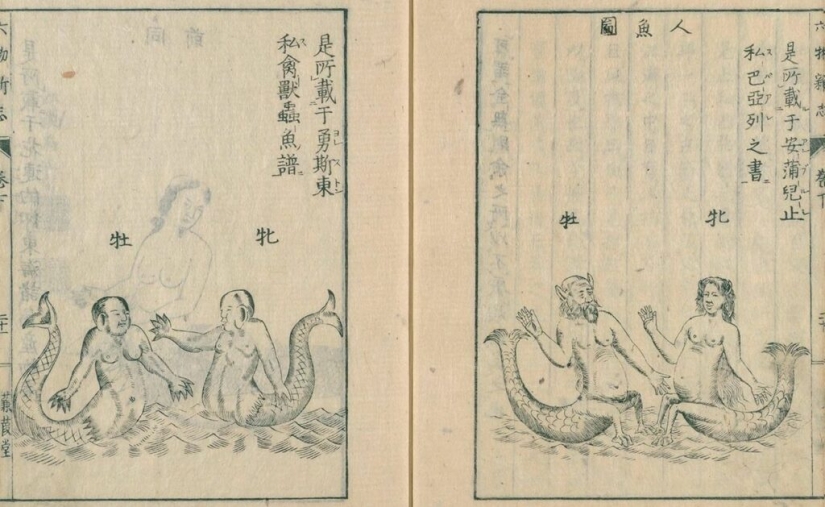
It is interesting, but in the "New Treatise on Six Things" Ning is already shown as bisexual beings. Male and female mermaids are depicted with a human torso, a fish tail and bird paws instead of legs.
Myths about the healing properties of mermaids led to the appearance in Japan has an entire industry. In Japan, ningyo mummies began to be made in the Edo period, in the 18th century. Then it was believed that the contemplation of a dried mermaid can save you from failures and health problems. In some provinces, it was believed that the owner of the mermaid was guaranteed longevity. Stuffed fantastic creatures made by ingenious craftsmen were even exhibited in temples.
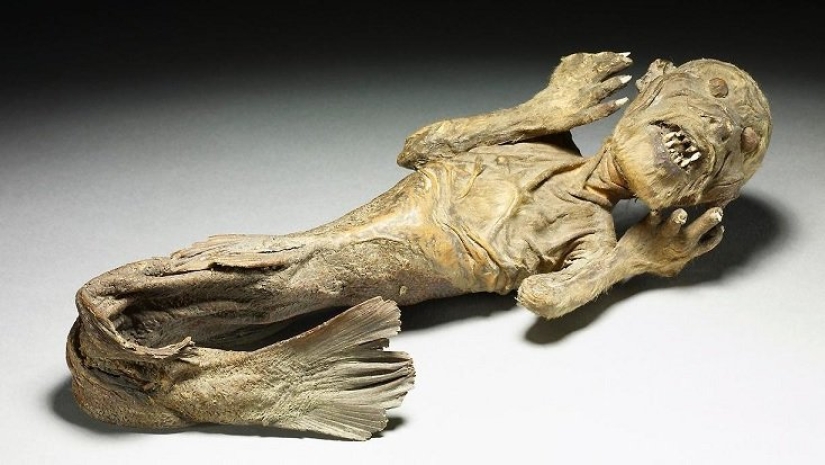
Mummies were made until the end of the Meiji period, which ended in 1912. Folklorist Kinoshita Hiroshi, who is considered the main expert on mermaids and other evil spirits in the city of Okayama, writes this about it:
In the National Ethnological Museum in Leiden in the Netherlands, you can still see the mummy of Ningyo. This specimen was brought to Europe from Nagasaki by a Dutch merchant in the early 19th century. The "Mermaid from Fiji", which was shown at Barnum's Circus in 1842, is also well known. Apparently, it was also a fake made by Japanese craftsmen.
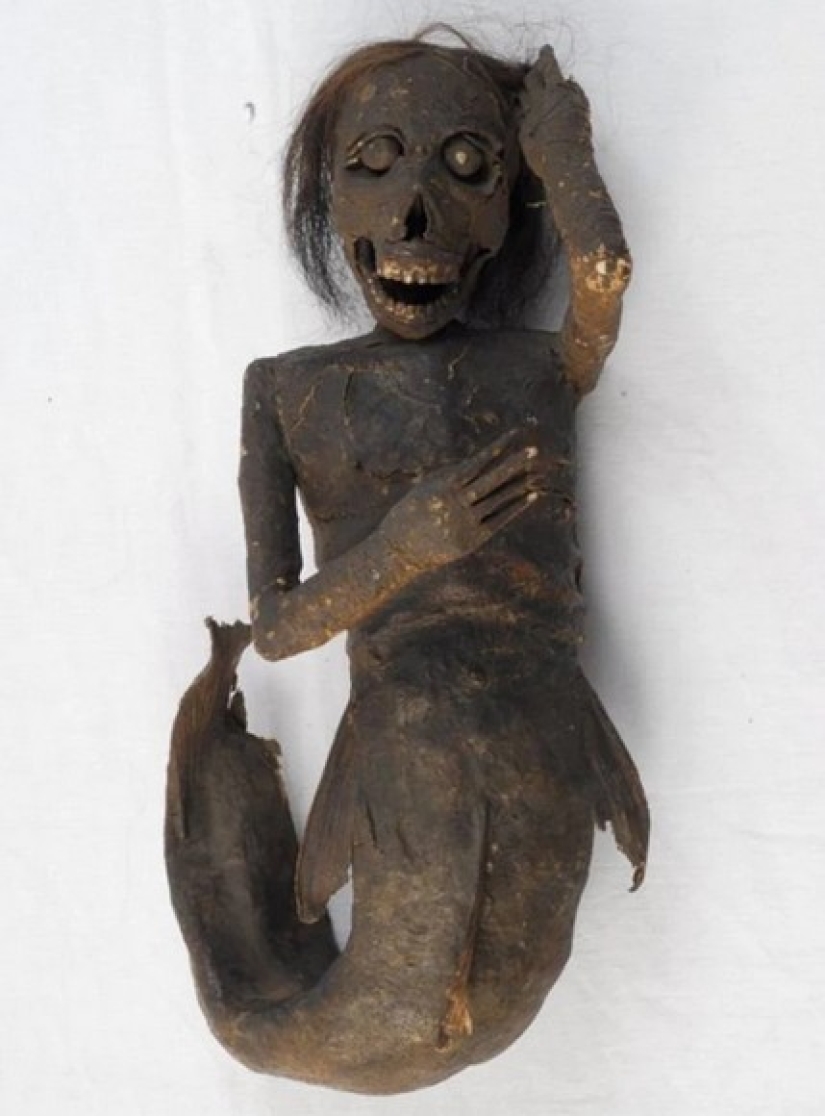
Hundreds of different materials were used to create the ningyo mummy. But the classic is the trunk of a monkey and the tail of a salmon. These two elements formed the basis to which a variety of "accessories" of organic origin were attached: the teeth of predatory animals and fish, claws, fins and even human hair.
Despite the enlightenment of modern Japanese, mermaid mummies are still kept in many Buddhist and Shinto temples. Their total number is unknown, but we can talk about hundreds of fakes. Parishioners go to them to ask for health and good luck in business and personal life.
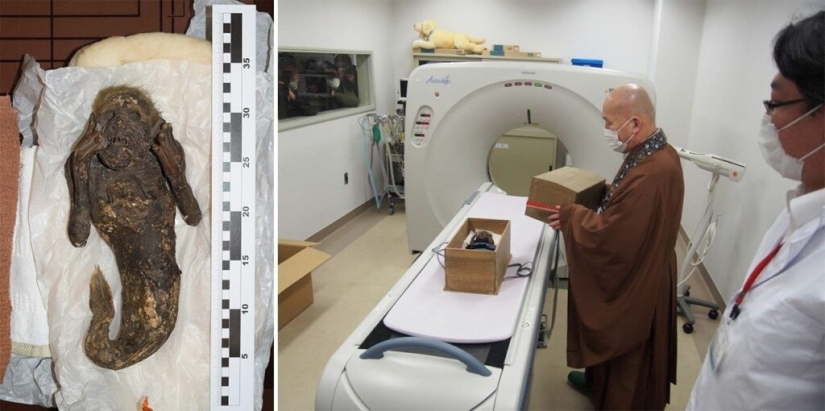
Some of the mummies are even recognized as part of cultural heritage and are protected by law. One of these ningyo is kept in the Kamuro Karukaya-do Buddhist Temple at the foot of Mount Koya in Hashimoto. It has a length of 60 cm and looks like a character in the painting "The Scream" by Edvard Munch. The largest extant mummy, 170 cm long, is displayed in the altar of the temple in Tensho Kesya in Fujinomiya.
Sometimes ningyo mummies even become objects of serious research. They are valuable to science because they consist of parts of real living beings. Representatives of universities negotiate with the abbots of temples and they, without much enthusiasm, provide artifacts for study.
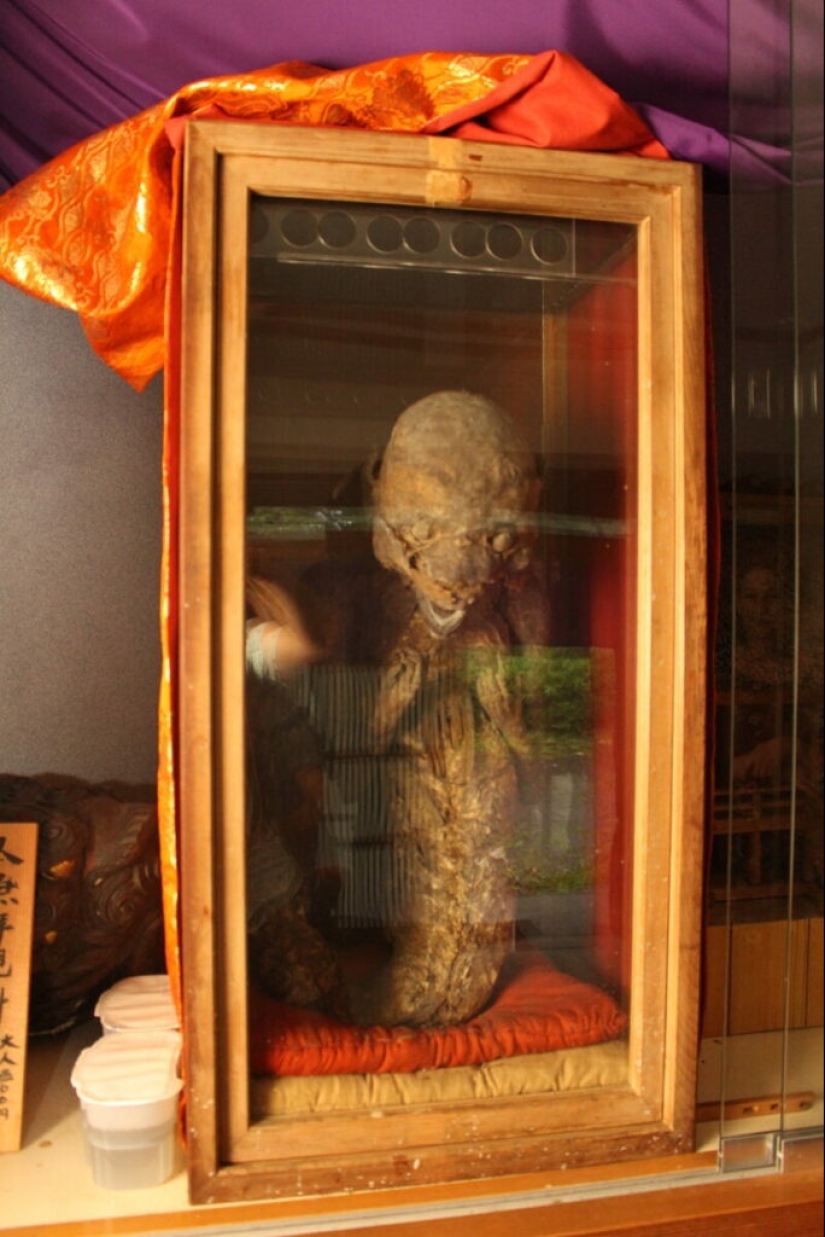
There are still discussions about what kind of creatures the Japanese took for mermaids. Most researchers believe that these were salamanders, manatees, dugongs, sea lions and even the herring king — a rare deep-sea fish. Folklorists and psychologists are also interested in the role of mythical ningyo in the life of modern Japanese. Surprisingly, many islanders still believe that mermaids exist, and their mummies are real.
Recent articles

In the community, Weesp, North Holland is an unusual settlement called Hovevei (Hogeweyk). There reside 152: they eat, sleep, walk, ...

On 16 April 1889 in London in a family of actors pop was born Charles Spencer Chaplin. Sir "Charlie" Chaplin — British comic ...

Female face with rolled eyes, open mouth and tongue sticking out in Japan called ahaha. In a country where pornography is driven ...